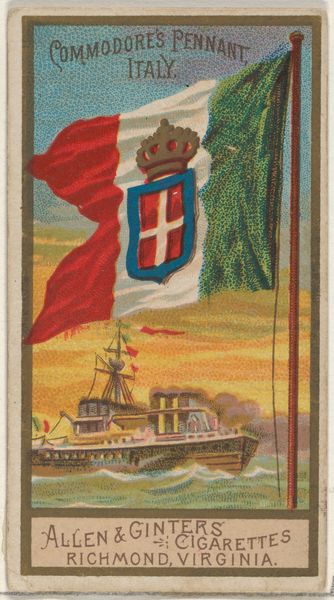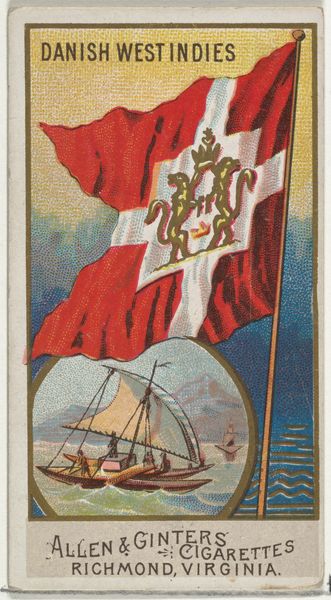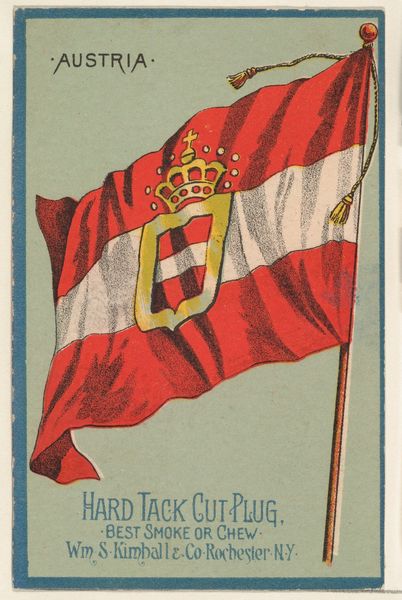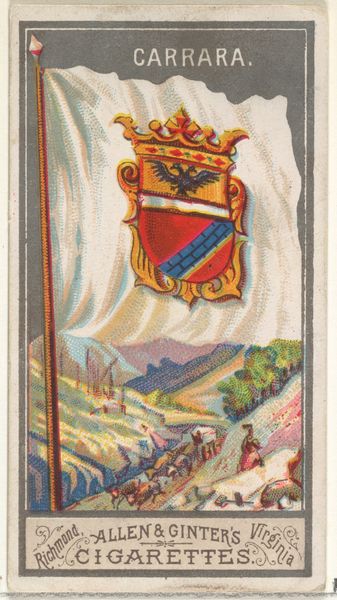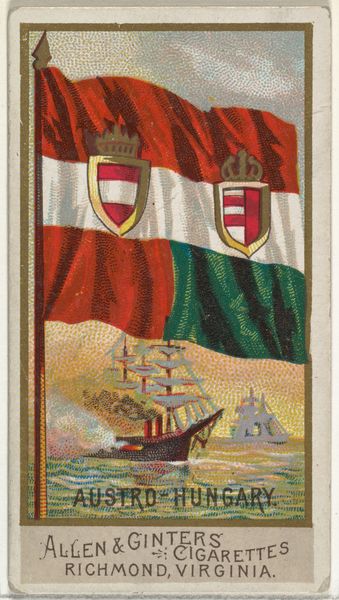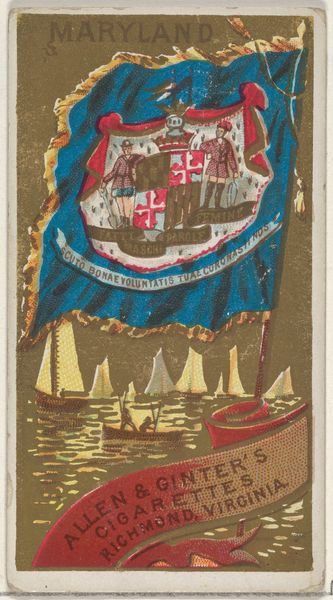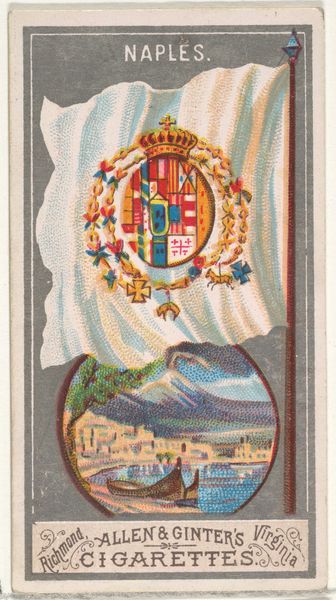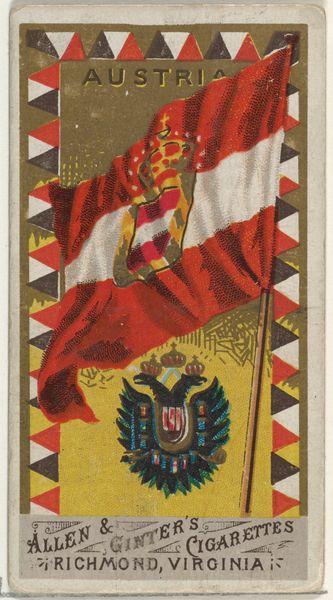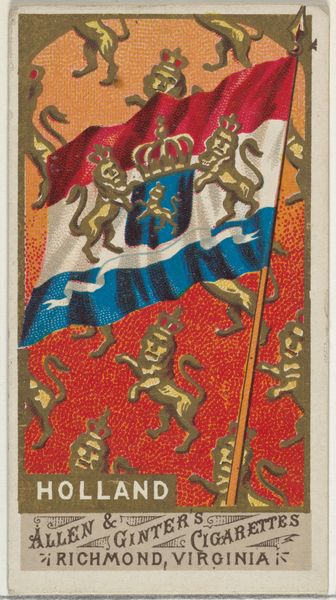
Sicily, from Flags of All Nations, Series 2 (N10) for Allen & Ginter Cigarettes Brands 1890
0:00
0:00
drawing, coloured-pencil, print
#
drawing
#
coloured-pencil
# print
#
coloured pencil
#
naive art
#
miniature
Dimensions: Sheet: 2 3/4 x 1 1/2 in. (7 x 3.8 cm)
Copyright: Public Domain
Editor: This little print from 1890, titled "Sicily, from Flags of All Nations," was made by Allen & Ginter. It looks like a colored-pencil drawing, really charmingly rendered on a miniature scale. I'm curious: what can we learn by considering the image’s origins as part of a series of cigarette cards? Curator: That's a great starting point. These cards were designed to be collected and traded, weren't they? Let's think about what it meant to depict “nations” this way. Who was included, and how were they being represented to consumers? These images participated in a broader project of nation-building and colonial representation. Editor: So, you’re suggesting the visual shorthand in these prints promoted particular ideas about Sicilian identity, for instance? Curator: Precisely. Notice the symbolism within the flag: the coat of arms prominently displayed against the seascape. What values do you think Allen & Ginter were associating with Sicily by choosing these emblems, and embedding them within the context of global trade via the ship struggling against the waves? Also consider that flags themselves are highly contested symbols of inclusion and exclusion. How might the presentation of Sicily through this flag either uphold or challenge existing power dynamics? Editor: That is really thought-provoking, I didn't initially think about that... Curator: And it’s interesting to think about how a cigarette company was using these kinds of national images to sell its products. Consumption, nationalism, and representation are all wrapped up in this seemingly simple little image. What does it mean when products from a particular locality gain worldwide circulation, and what narratives become dominant, which get overlooked? Editor: It makes me wonder about the circulation of these cards beyond America, and how they might have impacted people's perspectives on Sicilian culture. It shows how even something seemingly innocuous can be part of a complex, unequal exchange of ideas. Curator: Exactly. Looking at it that way helps us move beyond just aesthetic appreciation. We can then interrogate the deeper historical and political context within which it was made and circulated. Editor: Thank you. I hadn't considered that history and politics are right there on the surface. Curator: Glad I could illuminate these issues. These cards can ignite a very fertile line of thought.
Comments
No comments
Be the first to comment and join the conversation on the ultimate creative platform.

